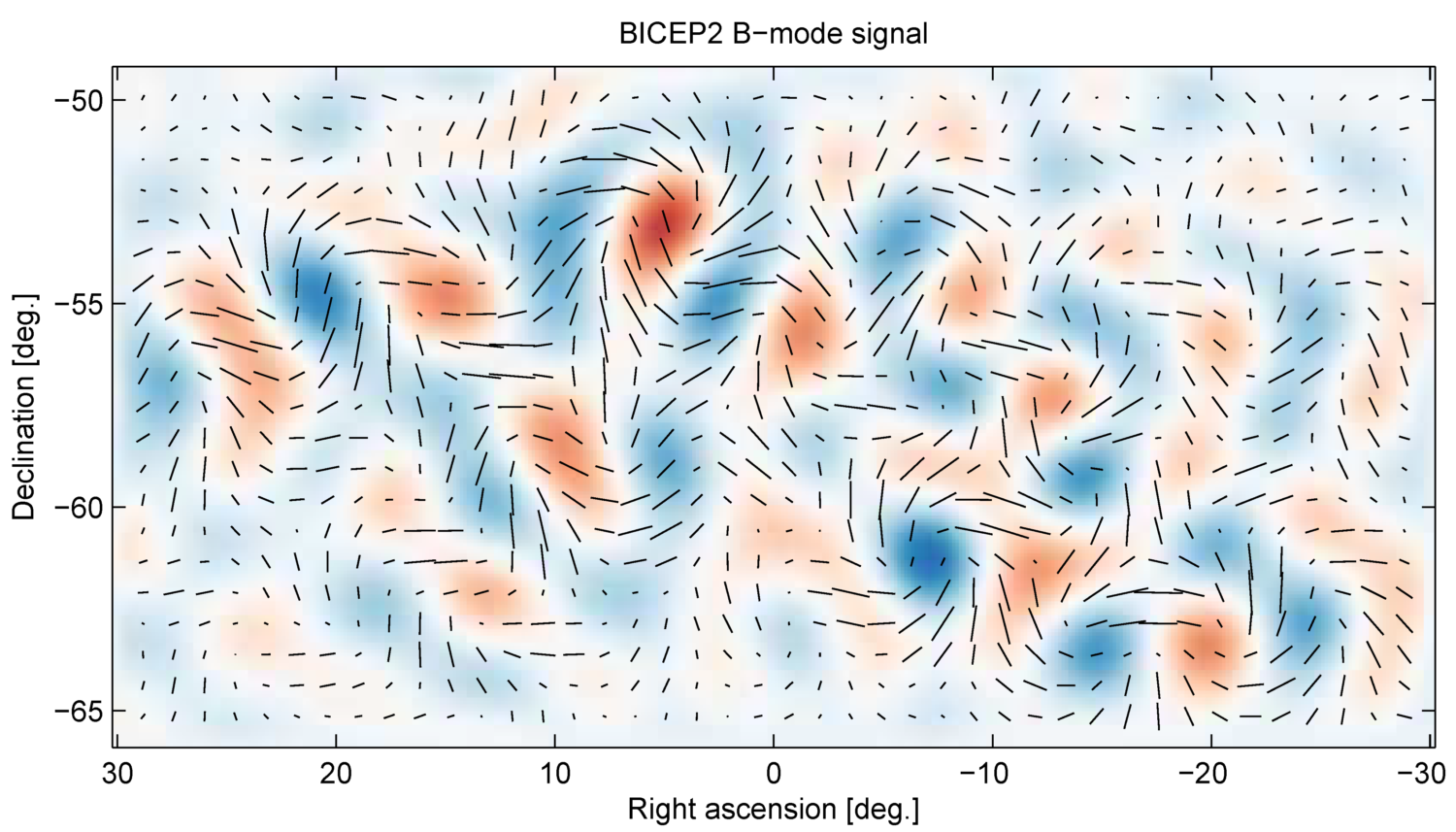
A cosmic dead end?
Patterns seen in controversial B-mode data collected by the BICEP2 collaboration.
In March of this year, a group of researchers announced they had detected gravitational waves produced during a tiny instant as the big bang got under way. BICEP2, a telescope located on the South Pole, had produced the most detailed analysis to date of the cosmic microwave background—the big bang’s leftover radiation, still suffusing the universe. The results were clear: the universe had, in that moment, expanded to a vast size from a single point.
If the findings hold up to further investigation, they are the first solid evidence that the universe once very briefly grew so fast that some regions retreated from others faster than the speed of light, a result that surprisingly would not violate relativity theories and would support speculation put forward for decades.
The announcement set the scientific community abuzz, and the collective emotion was palpable. But then came sobering news. In late September, new research suggested that dust particles in space could have mimicked the signals that BICEP2 leaders were seeking from the universe’s birth. Scientists at the Harvard-Smithsonian Center for Astrophysics—which had submitted the initial findings for publication—were slammed for going public before passing rigorous peer review. The balloon of excitement, which had been growing steadily since March, seemed to be in danger of bursting.
The thrill of discovery
On Friday, March 7, 10 days before the public announcement of BICEP2’s discovery, Marc Kamionkowski, a physics professor at Johns Hopkins University, was sitting in a committee meeting when he got an email from Jamie Bock, a physicist at Caltech and a member of the BICEP2 collaboration, asking if Bock could call him.
“Jamie usually didn’t just call me up unless it was something important,” said Kamionkowski while speaking Oct. 20 at CASW’s New Horizons in Science, part of the ScienceWriters2014 conference in Columbus, Ohio. Bock told Kamionkowski that he believed BICEP2 had, as hoped, detected primordial gravitational waves and that the research team was set to announce the discovery.
To the scientific community, this was big. The theory of the rapid early expansion of spacetime, called inflation, was first suggested in the 1980s. But for over four decades it only existed in mathematical models.
The detection of gravitational waves from the big bang links the theory with something we can observe in the universe. The BICEP2 team believed that they had detected a pattern (see top image) in the cosmic microwave background establishing such a link.
“These things were figments of theoretical imagination,” said Kamionkowski. “It really seemed far-fetched that any of these ideas would actually ever hold water.”
Which is why the picture taken by BICEP2 is so important, according to Kamionkowski. “It’s a Rosetta Stone of the early universe,” he said: it weds theory with reality.
But beginning in May there were rumblings that something was amiss. Other physicists began publishing critiques of the BICEP2 research team’s results. Princeton University’s David Spergel was one of the main detractors. Spergel pointed out that the telescope’s images could have been the result of cosmic dust. In late June the BICEP2 team responded, publishing a revised version of their results. In the paper, they conceded that space dust could have played a part in the telescope’s findings. Then in September the Planck satellite collaboration released a map showing a high concentration of dust across the sky at the location BICEP2 seemed to have seen imprints of gravitational waves.
And the agony of doubt
Since release of the Planck data, the BICEP2 team has been criticized for going public hastily. “The BICEP2 astrophysicists should have been more cautious,” said Spergel in an interview with Quanta magazine.
“In retrospect, we should have known better,” admitted Kamionkowski. He adds: “In a court of law you’re innocent until proven guilty. In science you’re guilty until proven innocent.”
Kamionkowski cautioned the science writers that the Planck results have large uncertainties. The data do not contradict all the lines of evidence presented by the BICEP2 team, he noted, so it will take some time to undertstand the true source of the unusual signal detected by BICEP2. The BICEP2 team has announced plans to collaborate with Planck on further study of the cosmic microwave background in search of gravitational waves. Most physicists, including critics, believe that BICEP2’s study is a step toward finding proof of the phenomenon. And using Planck’s dust map, scientists now know that they should be concentrating on the clearest swaths of the sky.